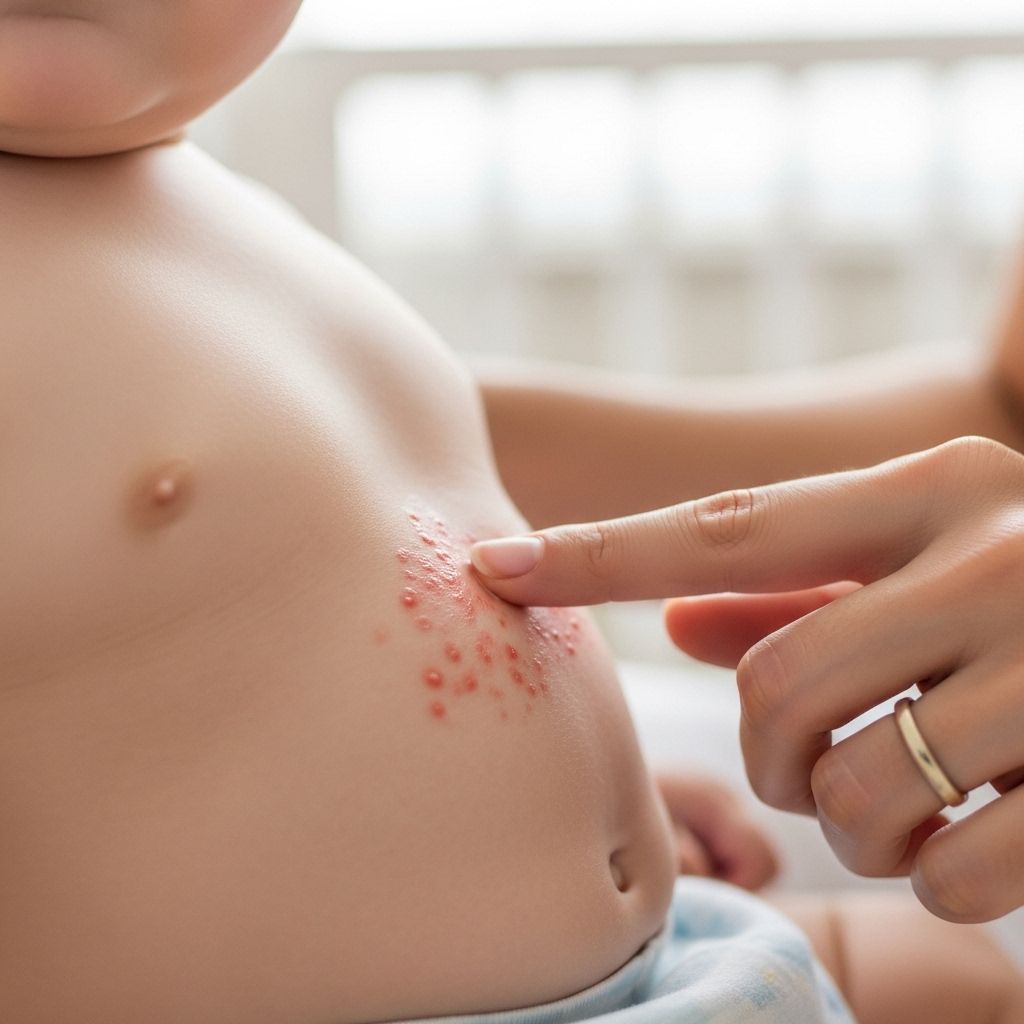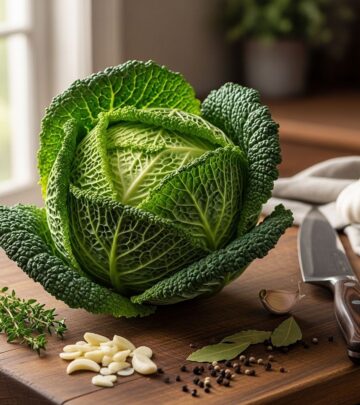How to Treat Heat Rash in Babies: Causes, Remedies, and Prevention
Breathable fabrics and simple home remedies keep delicate skin calm on sweltering days.

Heat rash, also known as prickly heat or miliaria, is a common skin condition in babies, especially during warm, humid weather. Although usually not dangerous, it can make your child fussy and uncomfortable. Understanding the symptoms, causes, treatment options, and prevention methods is key to keeping your baby’s skin healthy and rash-free in hot weather.
What Is Heat Rash in Babies?
Heat rash occurs when a baby’s sweat ducts become blocked, trapping perspiration beneath the skin. This leads to irritation, inflammation, and the characteristic small red bumps or blisters that define prickly heat. Heat rash is most common in babies due to their underdeveloped sweat glands and is especially likely if your child is dressed too warmly, exposed to very hot or humid environments, or if skin folds retain moisture.
Types of Heat Rash
- Miliaria crystallina: The mildest form, appearing as clear, superficial blisters without redness.
- Miliaria rubra (prickly heat): More common in babies, characterized by red bumps and itching or tingling sensations.
- Miliaria profunda: Rare in babies, involves deeper skin layers and creates firm, flesh-colored lesions.
Causes of Heat Rash in Babies
- Blocked sweat ducts: Sweat gets trapped because the glands or ducts are immature or blocked by clothing or creams.
- Hot and humid conditions: Overdressing or living in a non-ventilated area increases sweating.
- Skin friction: Skin folds rub together and trap heat, especially in the neck, armpits, groin, and diaper areas.
- Thick creams or ointments: Heavy lotions can clog pores and contribute to sweat duct blockage.
Signs and Symptoms of Heat Rash in Babies
Recognizing heat rash early helps prevent discomfort and complications. Typical symptoms include:
- Small, red or pink bumps clustered or scattered, especially on the neck, chest, back, armpits, elbow creases, groin, or diaper area.
- Clear, watery blisters in mild cases (miliaria crystallina).
- Itchiness or prickling sensation—babies may be fussier than usual or appear uncomfortable.
- Red, inflamed skin in the affected areas.
- No fever or general illness—if your child develops these, consider other causes and contact a pediatrician.
Common Areas for Heat Rash in Babies
- Neck and chin folds
- Armpits and upper chest
- Back and shoulders
- Inner elbows and thighs
- Diaper area
How to Treat Heat Rash in Babies
Treatment for heat rash is straightforward and focused on cooling the skin, avoiding further irritation, and keeping the affected areas clean and dry. Medication is usually unnecessary—gentle home care is often all that’s required.
Steps to Relieve and Care for Heat Rash
- Move your baby to a cooler environment: Air-conditioned rooms or fans help reduce sweating.
- Remove excess clothing: Dress your baby in a single layer of loose, lightweight, and breathable cotton clothing. Allow the skin to be exposed to air as much as possible.
- Keep the skin cool: Apply a cool, damp washcloth to the rash for 5-10 minutes, several times daily. For larger areas, a cool (not cold) bath without soap can help soothe irritation. Always let the skin air dry rather than rubbing with a towel.
- Avoid ointments or thick creams: Do not use baby oil, petroleum jelly, or other greasy substances, as they may block pores and worsen the rash.
- If needed for itching, a small amount of 1% hydrocortisone cream (over-the-counter) can be used 2-3 times a day, but only for a short duration and after consulting with a pediatrician for infants.
- Calamine lotion may sometimes help relieve itching but should be used sparingly and not for very young babies.
- Maintain a cool sleeping environment: Use a fan, ensure good bedroom ventilation, and lay your baby on a cotton towel (especially for older children; for infants under 1 year, consult your doctor first).
- Frequently check diaper area: Change diapers promptly to keep skin dry and prevent further irritation.
- Avoid irritants: Refrain from using scented soaps, bubble baths, or laundry detergents that can worsen rash symptoms.
What to Avoid
- Petroleum-based ointments or oils on the rash.
- Steroid ointments without medical advice for infants.
- Overdressing or bundling the baby in thick clothing.
- Leaving babies in carriers, car seats, or strollers for extended periods in the heat.
How to Prevent Heat Rash in Babies
Prevention focuses on keeping your baby’s skin cool, dry, and well-ventilated:
- Dress babies in a single layer of light-colored, breathable cotton clothing in warm weather. Avoid thick or synthetic fabrics.
- Keep indoor temperatures cool and well-ventilated. Use fans or air conditioning to promote airflow and reduce humidity.
- Avoid tight, restrictive clothing that traps sweat and heat in skin folds.
- Minimize outdoor exposure during peak heat; seek shade, offer frequent hydration, and avoid unnecessary layers outside.
- Change wet clothes immediately and check your baby’s diaper regularly to keep skin dry.
- Do not apply thick creams, ointments, or oils that can block pores and trap sweat.
- Ventilate sleeping area: Make sure your child’s sleeping space allows air circulation.
- Do not leave your baby to nap in car seats, carriers, or strollers where heat can build up quickly.
When to See a Pediatrician
Most cases of heat rash resolve within a few days with simple home care. However, consult your pediatrician if you notice:
- The rash doesn’t improve after 3 days of home treatment.
- Signs of skin infection: Increased redness, swelling, warmth, oozing, pus, or a yellow crust.
- Persistent fever, lethargy, or signs of illness unrelated to heat rash.
- Rash appears to spread rapidly or causes significant pain.
Immediate care is crucial if your baby exhibits symptoms such as high fever, rapid breathing, vomiting, or irritability—these could indicate heat exhaustion or heat stroke, which are medical emergencies.
Natural and Home Remedies for Baby Heat Rash
Along with the standard approaches, some gentle home remedies may soothe your baby’s skin:
- Cool compresses: Gently patting the rash with a wet, cool washcloth can bring quick relief.
- Oatmeal baths: Adding colloidal oatmeal to a lukewarm bath may help calm itching and reduce inflammation. Do not use soap.
- Change environments frequently: Move your baby back indoors from outside, or switch rooms to avoid hot spots within your home.
- Air exposure: Allow your baby to spend short supervised periods without clothing or diapers to help skin dry naturally.
Note: Always consult a pediatrician before trying new remedies, especially for infants younger than six months.
Heat Rash vs. Other Baby Rashes
| Rash Type | Appearance | Main Trigger | Common Areas |
|---|---|---|---|
| Heat Rash (Prickly Heat) | Red or pink tiny bumps; may be clear in mild cases | Hot, humid conditions, sweating, overdressing | Neck, armpits, chest, groin, back, diaper area |
| Diaper Rash | Red, raw skin with possible open sores | Prolonged exposure to wet diapers, friction | Genital area, buttocks, upper thighs |
| Eczema | Dry, scaly, red patches; intense itching | Genetic factors, skin irritation, allergens | Cheeks, scalp, arms, legs, behind knees |
| Allergic Reaction | Hives or acute swelling, redness, possible blisters | Foods, medications, or environmental irritants | Anywhere on the body |
Practical Tips for Parents
- Monitor the weather forecast and plan outdoor activities during cooler parts of the day.
- Keep hydrated—Offer older babies sips of water; for infants, continue breastfeeding or formula as usual.
- Layer clothing for easy removal when temperatures rise.
- Travel prepared with a portable fan, extra clothes, and cool water.
Frequently Asked Questions (FAQs)
Q: How long does heat rash last in babies?
A: Most heat rashes clear up within 2-3 days with prompt, gentle home care.
Q: Can I use powder or talcum to treat baby heat rash?
A: Medicated powders are not recommended as they may irritate the lungs if inhaled and do not promote healing; keeping skin cool and dry is safer for babies.
Q: Is heat rash contagious?
A: No, heat rash is not contagious. It occurs due to trapped sweat, not as a result of infection by bacteria, viruses, or fungi.
Q: Should I stop using lotion during summer months?
A: Avoid heavy creams or oily products that block pores in hot weather. If your baby needs a moisturizer, choose a lightweight, fragrance-free lotion and apply sparingly.
Q: When is medical treatment necessary for heat rash?
A: Seek medical attention if the rash lasts more than a few days, worsens, looks infected, or is accompanied by fever, swelling, or unusual behavior.
Key Takeaways
- Keep your baby cool, dry, and dressed in breathable fabrics to prevent heat rash.
- Treat heat rash by moving your baby to a cooler area, using gentle cooling measures, and avoiding ointments that block pores.
- See a pediatrician if the rash does not improve or shows signs of infection.
- With proper care, most heat rashes resolve quickly and without complications.
References
- https://www.childrens.com/health-wellness/how-to-prevent-and-treat-heat-rash-in-children
- https://www.mayoclinic.org/diseases-conditions/heat-rash/symptoms-causes/syc-20373276
- https://www.seattlechildrens.org/conditions/a-z/heat-rash/
- https://www.stlouischildrens.org/health-resources/pulse/healing-heat-rash
- https://www.nhs.uk/conditions/heat-rash-prickly-heat/
- https://myhealth.alberta.ca/Health/aftercareinformation/pages/conditions.aspx?hwid=abk9750
- https://www.healthychildren.org/English/ages-stages/baby/bathing-skin-care/Pages/Heat-Rash.aspx
- https://www.saintlukeskc.org/health-library/when-your-child-has-heat-rash-prickly-heat
- https://my.clevelandclinic.org/health/diseases/22440-heat-rashprickly-heat
Read full bio of Sneha Tete












